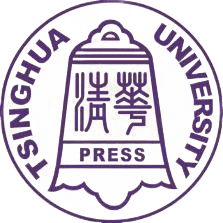Site-Occupation-Tuned Superionic LixScCl3+xHalide Solid Electrolytes for All-Solid-State Batteries
Jianwen Liang
1
,
Xiaona Li
1
,
Shuo Wang
2
,
Keegan Adair
1
,
Weihan Li
1
,
Yang Zhao
1
,
Changhong Wang
1
,
Yongfeng Hu
3
,
Li Zhang
4
,
Shangqian Zhao
4
,
Shigang Lu
4
,
Huan Huang
5
,
Ruying Li
1
,
Yifei Mo
2
,
Xueliang Andy Sun
1
3
Canadian Light Source, 44 Innovation Boulevard, Saskatoon, SK S7N 2V3, Canada
|
4
China Automotive Battery Research Institute Co. Ltd, fifth Floor, No. 43, Mining Building, North Sanhuan Middle Road, Beijing, 100088, China
|
5
Glabat Solid-State Battery Inc., 700 Collip Circle, London, ON N6G 4X8, Canada
|
Publication type: Journal Article
Publication date: 2020-03-26
scimago Q1
wos Q1
SJR: 5.554
CiteScore: 22.5
Impact factor: 15.6
ISSN: 00027863, 15205126
PubMed ID:
32212650
General Chemistry
Catalysis
Biochemistry
Colloid and Surface Chemistry
Abstract
The enabling of high energy density of all-solid-state lithium batteries (ASSLBs) requires the development of highly Li+-conductive solid-state electrolytes (SSEs) with good chemical and electrochemical stability. Recently, halide SSEs based on different material design principles have opened new opportunities for ASSLBs. Here, we discovered a series of LixScCl3+x SSEs (x = 2.5, 3, 3.5, and 4) based on the cubic close-packed anion sublattice with room-temperature ionic conductivities up to 3 × 10-3 S cm-1. Owing to the low eutectic temperature between LiCl and ScCl3, LixScCl3+x SSEs can be synthesized by a simple co-melting strategy. Preferred orientation is observed for all the samples. The influence of the value of x in LixScCl3+x on the structure and Li+ diffusivity were systematically explored. With increasing x value, higher Li+, lower vacancy concentration, and less blocking effects from Sc ions are achieved, enabling the ability to tune the Li+ migration. The electrochemical performance shows that Li3ScCl6 possesses a wide electrochemical window of 0.9-4.3 V vs Li+/Li, stable electrochemical plating/stripping of Li for over 2500 h, as well as good compatibility with LiCoO2. LiCoO2/Li3ScCl6/In ASSLB exhibits a reversible capacity of 104.5 mAh g-1 with good cycle life retention for 160 cycles. The observed changes in the ionic conductivity and tuning of the site occupations provide an additional approach toward the design of better SSEs.
Found
Nothing found, try to update filter.
Found
Nothing found, try to update filter.
Top-30
Journals
|
5
10
15
20
25
30
|
|
|
Journal of Materials Chemistry A
26 publications, 5.82%
|
|
|
Advanced Energy Materials
24 publications, 5.37%
|
|
|
ACS applied materials & interfaces
21 publications, 4.7%
|
|
|
Energy Storage Materials
19 publications, 4.25%
|
|
|
ACS Energy Letters
18 publications, 4.03%
|
|
|
Chemistry of Materials
14 publications, 3.13%
|
|
|
Advanced Functional Materials
13 publications, 2.91%
|
|
|
Journal of the American Chemical Society
12 publications, 2.68%
|
|
|
Nature Communications
12 publications, 2.68%
|
|
|
ACS Applied Energy Materials
12 publications, 2.68%
|
|
|
Advanced Materials
12 publications, 2.68%
|
|
|
Chemical Engineering Journal
11 publications, 2.46%
|
|
|
Journal of Power Sources
10 publications, 2.24%
|
|
|
Angewandte Chemie - International Edition
9 publications, 2.01%
|
|
|
Angewandte Chemie
9 publications, 2.01%
|
|
|
Energy and Environmental Science
8 publications, 1.79%
|
|
|
Advanced Science
7 publications, 1.57%
|
|
|
Nano Energy
7 publications, 1.57%
|
|
|
Small
7 publications, 1.57%
|
|
|
Nano Letters
7 publications, 1.57%
|
|
|
Journal of Physical Chemistry C
6 publications, 1.34%
|
|
|
ACS Materials Letters
6 publications, 1.34%
|
|
|
Chemical Science
6 publications, 1.34%
|
|
|
Chinese Chemical Letters
5 publications, 1.12%
|
|
|
Electrochemical Energy Reviews
5 publications, 1.12%
|
|
|
Chemical Reviews
5 publications, 1.12%
|
|
|
Journal of Energy Chemistry
5 publications, 1.12%
|
|
|
Journal of Energy Storage
4 publications, 0.89%
|
|
|
Journal of Solid State Electrochemistry
4 publications, 0.89%
|
|
|
Journal of Alloys and Compounds
4 publications, 0.89%
|
|
|
5
10
15
20
25
30
|
Publishers
|
20
40
60
80
100
120
|
|
|
American Chemical Society (ACS)
114 publications, 25.5%
|
|
|
Elsevier
107 publications, 23.94%
|
|
|
Wiley
95 publications, 21.25%
|
|
|
Royal Society of Chemistry (RSC)
56 publications, 12.53%
|
|
|
Springer Nature
44 publications, 9.84%
|
|
|
American Association for the Advancement of Science (AAAS)
5 publications, 1.12%
|
|
|
AIP Publishing
4 publications, 0.89%
|
|
|
The Electrochemical Society of Japan
4 publications, 0.89%
|
|
|
The Electrochemical Society
3 publications, 0.67%
|
|
|
IOP Publishing
2 publications, 0.45%
|
|
|
Acta Physica Sinica, Chinese Physical Society and Institute of Physics, Chinese Academy of Sciences
2 publications, 0.45%
|
|
|
MDPI
2 publications, 0.45%
|
|
|
Frontiers Media S.A.
1 publication, 0.22%
|
|
|
Nonferrous Metals Society of China
1 publication, 0.22%
|
|
|
Oxford University Press
1 publication, 0.22%
|
|
|
Autonomous Non-profit Organization Editorial Board of the journal Uspekhi Khimii
1 publication, 0.22%
|
|
|
Tsinghua University Press
1 publication, 0.22%
|
|
|
Science in China Press
1 publication, 0.22%
|
|
|
American Physical Society (APS)
1 publication, 0.22%
|
|
|
20
40
60
80
100
120
|
- We do not take into account publications without a DOI.
- Statistics recalculated weekly.
Are you a researcher?
Create a profile to get free access to personal recommendations for colleagues and new articles.
Metrics
448
Total citations:
448
Citations from 2024:
224
(50%)
Cite this
GOST |
RIS |
BibTex |
MLA
Cite this
GOST
Copy
Liang J. et al. Site-Occupation-Tuned Superionic LixScCl3+xHalide Solid Electrolytes for All-Solid-State Batteries // Journal of the American Chemical Society. 2020. Vol. 142. No. 15. pp. 7012-7022.
GOST all authors (up to 50)
Copy
Liang J., Li X., Wang S., Adair K., Li W., Zhao Y., Wang C., Hu Y., Zhang L., Zhao S., Lu S., Huang H., Li R., Mo Y., Sun X. A. Site-Occupation-Tuned Superionic LixScCl3+xHalide Solid Electrolytes for All-Solid-State Batteries // Journal of the American Chemical Society. 2020. Vol. 142. No. 15. pp. 7012-7022.
Cite this
RIS
Copy
TY - JOUR
DO - 10.1021/jacs.0c00134
UR - https://doi.org/10.1021/jacs.0c00134
TI - Site-Occupation-Tuned Superionic LixScCl3+xHalide Solid Electrolytes for All-Solid-State Batteries
T2 - Journal of the American Chemical Society
AU - Liang, Jianwen
AU - Li, Xiaona
AU - Wang, Shuo
AU - Adair, Keegan
AU - Li, Weihan
AU - Zhao, Yang
AU - Wang, Changhong
AU - Hu, Yongfeng
AU - Zhang, Li
AU - Zhao, Shangqian
AU - Lu, Shigang
AU - Huang, Huan
AU - Li, Ruying
AU - Mo, Yifei
AU - Sun, Xueliang Andy
PY - 2020
DA - 2020/03/26
PB - American Chemical Society (ACS)
SP - 7012-7022
IS - 15
VL - 142
PMID - 32212650
SN - 0002-7863
SN - 1520-5126
ER -
Cite this
BibTex (up to 50 authors)
Copy
@article{2020_Liang,
author = {Jianwen Liang and Xiaona Li and Shuo Wang and Keegan Adair and Weihan Li and Yang Zhao and Changhong Wang and Yongfeng Hu and Li Zhang and Shangqian Zhao and Shigang Lu and Huan Huang and Ruying Li and Yifei Mo and Xueliang Andy Sun},
title = {Site-Occupation-Tuned Superionic LixScCl3+xHalide Solid Electrolytes for All-Solid-State Batteries},
journal = {Journal of the American Chemical Society},
year = {2020},
volume = {142},
publisher = {American Chemical Society (ACS)},
month = {mar},
url = {https://doi.org/10.1021/jacs.0c00134},
number = {15},
pages = {7012--7022},
doi = {10.1021/jacs.0c00134}
}
Cite this
MLA
Copy
Liang, Jianwen, et al. “Site-Occupation-Tuned Superionic LixScCl3+xHalide Solid Electrolytes for All-Solid-State Batteries.” Journal of the American Chemical Society, vol. 142, no. 15, Mar. 2020, pp. 7012-7022. https://doi.org/10.1021/jacs.0c00134.























